The Salinity of Ocean Water is a critical characteristic that refers to the amount of dissolved salts and other minerals in the water. The ocean water is a mixture of salt, dissolved gases, organic and inorganic substances, and sediment. The salinity of ocean water varies from place to place and depends on various factors such as temperature, precipitation, evaporation, and freshwater inputs from rivers and streams. In this article, we will discuss salinity, its measurement, and the factors that influence it.
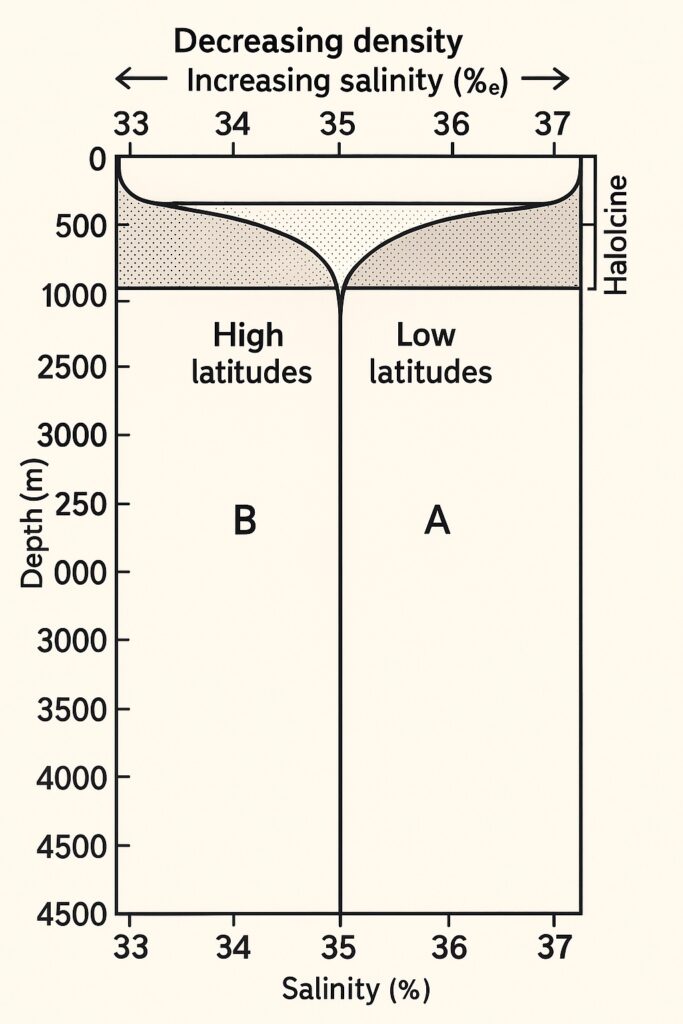
Table of Contents
What is Salinity?
Salinity is the total amount of dissolved salts and other minerals in ocean water. The most abundant salt in ocean water is sodium chloride, which is commonly known as table salt. Other salts that are found in ocean water include magnesium, calcium, and potassium. The concentration of salt in ocean water is typically expressed in parts per thousand (ppt). One ppt is equivalent to 1 gram of salt dissolved in 1,000 grams of water. The average salinity of ocean water is around 35 ppt, which means that for every 1,000 grams of ocean water, there are approximately 35 grams of salt.
Factors that Influence Salinity of Ocean Water
There are several factors that influence it, including temperature, precipitation, evaporation, and freshwater inputs. Let’s discuss each of these factors in detail.
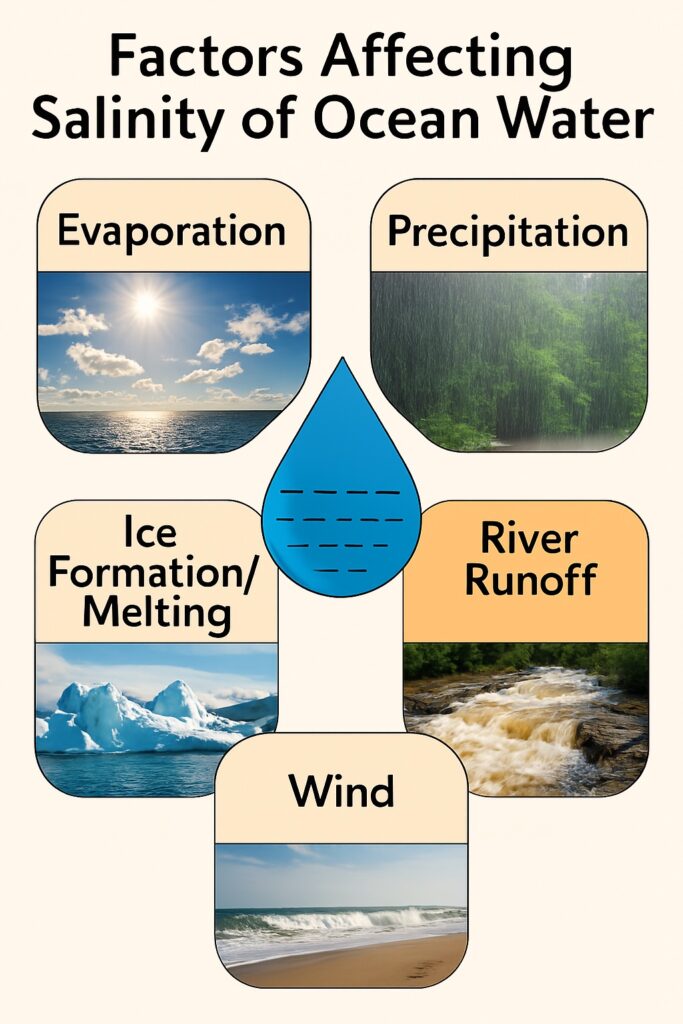
Temperature
Temperature plays a critical role in determining the salinity of ocean water. As the temperature of ocean water increases, the rate of evaporation increases, which results in higher salinity. Similarly, as the temperature of ocean water decreases, the rate of evaporation decreases, which results in lower salinity. The temperature also affects the density of ocean water, which influences the movement of water in the ocean.
Precipitation
Precipitation is another factor that influences the salinity of ocean water. When it rains, freshwater enters the ocean, which dilutes the salt concentration and lowers the salinity. The amount of freshwater that enters the ocean varies from place to place and depends on factors such as the proximity of rivers and the frequency of rainfall.
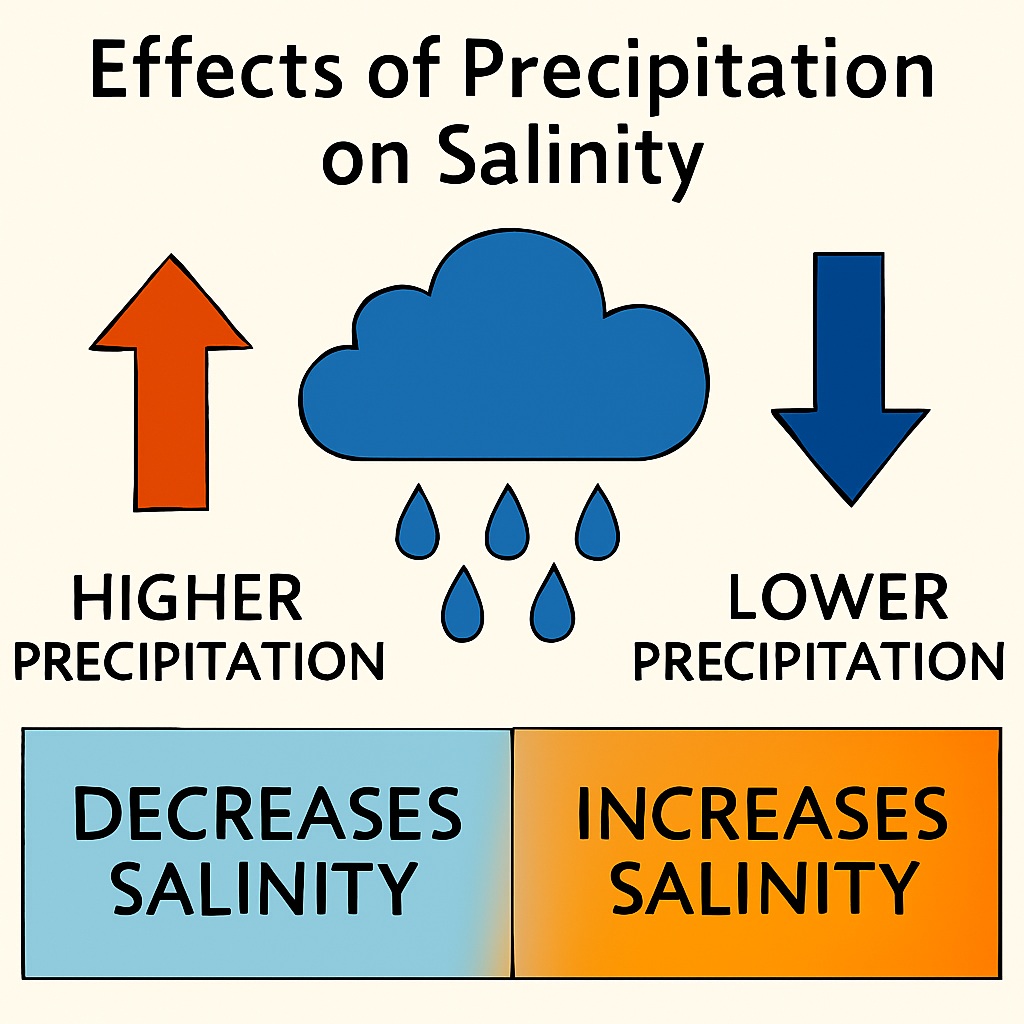
Evaporation
Evaporation is another factor that influences the salinity of ocean water. When water evaporates from the ocean surface, the salt concentration in the water increases, which results in higher salinity. The rate of evaporation varies from place to place and depends on factors such as temperature, wind speed, and humidity.
Freshwater Inputs
Freshwater inputs from rivers and streams also influence the salinity of ocean water. When freshwater enters the ocean, it dilutes the salt concentration and lowers the salinity. The amount of freshwater that enters the ocean varies from place to place and depends on factors such as the size of the river and the frequency of rainfall.
Wind
Winds play a crucial role in influencing the salinity of ocean water through their effects on evaporation, precipitation, ocean currents, and water mixing. In regions where strong, dry winds prevail—such as the subtropical high-pressure belts—evaporation rates are high. As water evaporates from the ocean surface, it leaves the dissolved salts behind, leading to an increase in salinity. This is especially evident in enclosed or semi-enclosed seas like the Red Sea and the Persian Gulf, where high evaporation and limited freshwater inflow result in very salty waters.
Conversely, winds that carry moisture-laden air to certain regions can enhance precipitation. When heavy rainfall occurs over the ocean, it adds freshwater to the surface, diluting the salt content and thus decreasing salinity. This is commonly observed in the equatorial belt, where constant rising warm air and moisture lead to frequent rainfall and relatively lower salinity levels.
Winds also drive surface ocean currents that transport saline water from one region to another. For example, the trade winds push warm, salty water westward in the tropics, affecting salinity patterns across ocean basins.
Salinity of Ocean Water : Variation of Salinity with latitude
In general, the ocean water at lower latitudes tends to be saltier than at higher latitudes.
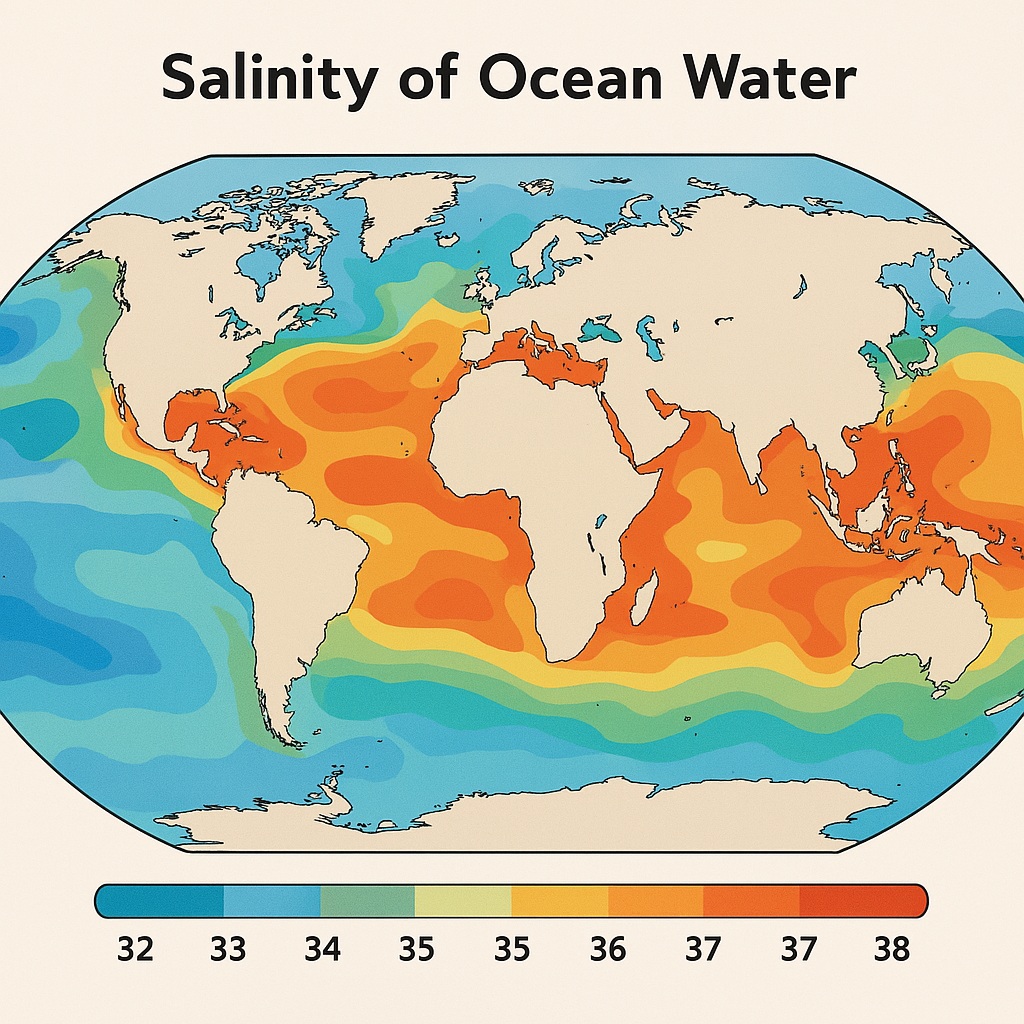
The pattern of salinity variation with latitude is not uniform and can be influenced by regional factors such as ocean currents and wind patterns. For example, in areas where ocean currents bring in saltier water, such as the Gulf Stream in the Atlantic Ocean, the salinity levels can be higher than expected based on latitude alone.
Case Study : Lower Salinity of Indian Ocean Compared to Arabian Ocean
The Arabian Sea and the Indian Ocean are two bodies of water located in the Indian Ocean region. Both of these seas have different levels of salinity due to various factors.
The Indian Ocean has a lower average salinity compared to the Arabian Sea. The average salinity of the Indian Ocean is about 3.6%, while the Arabian Sea has an average salinity of about 3.9%.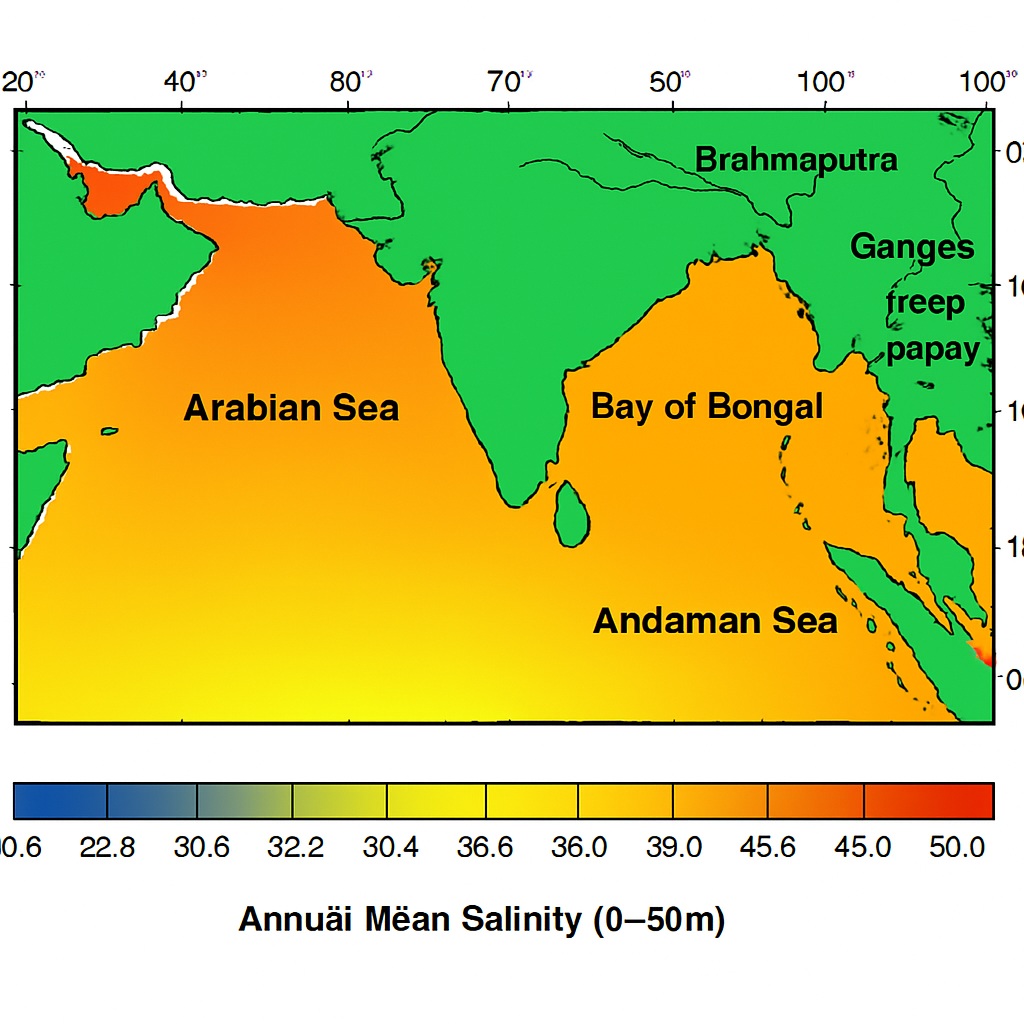 There are several reasons why the Arabian Sea has a higher salinity compared to the Indian Ocean. One of the main reasons is the difference in the amount of freshwater inflow into each sea. The Indian Ocean receives a significant amount of freshwater from several rivers, including the Ganges, Brahmaputra, and Indus rivers. These rivers bring freshwater from the Himalayas and other areas, which reduces the salinity of the Indian Ocean.
There are several reasons why the Arabian Sea has a higher salinity compared to the Indian Ocean. One of the main reasons is the difference in the amount of freshwater inflow into each sea. The Indian Ocean receives a significant amount of freshwater from several rivers, including the Ganges, Brahmaputra, and Indus rivers. These rivers bring freshwater from the Himalayas and other areas, which reduces the salinity of the Indian Ocean.
On the other hand, the Arabian Sea receives less freshwater inflow from rivers, and therefore, the water in the sea is more saline. Additionally, the Arabian Sea has a high rate of evaporation, which also contributes to the higher salinity levels.
Another factor that affects the salinity of these two seas is the monsoon season. During the monsoon season, there is heavy rainfall in the Indian subcontinent, which results in a higher freshwater inflow into the Indian Ocean. This reduces the salinity of the Indian Ocean temporarily.
Effect of Salinity on Movement of Water
Salinity has a significant effect on the movement of ocean water, primarily through its influence on water density. Along with temperature, salinity helps drive thermohaline circulation, a global system of deep-ocean currents.
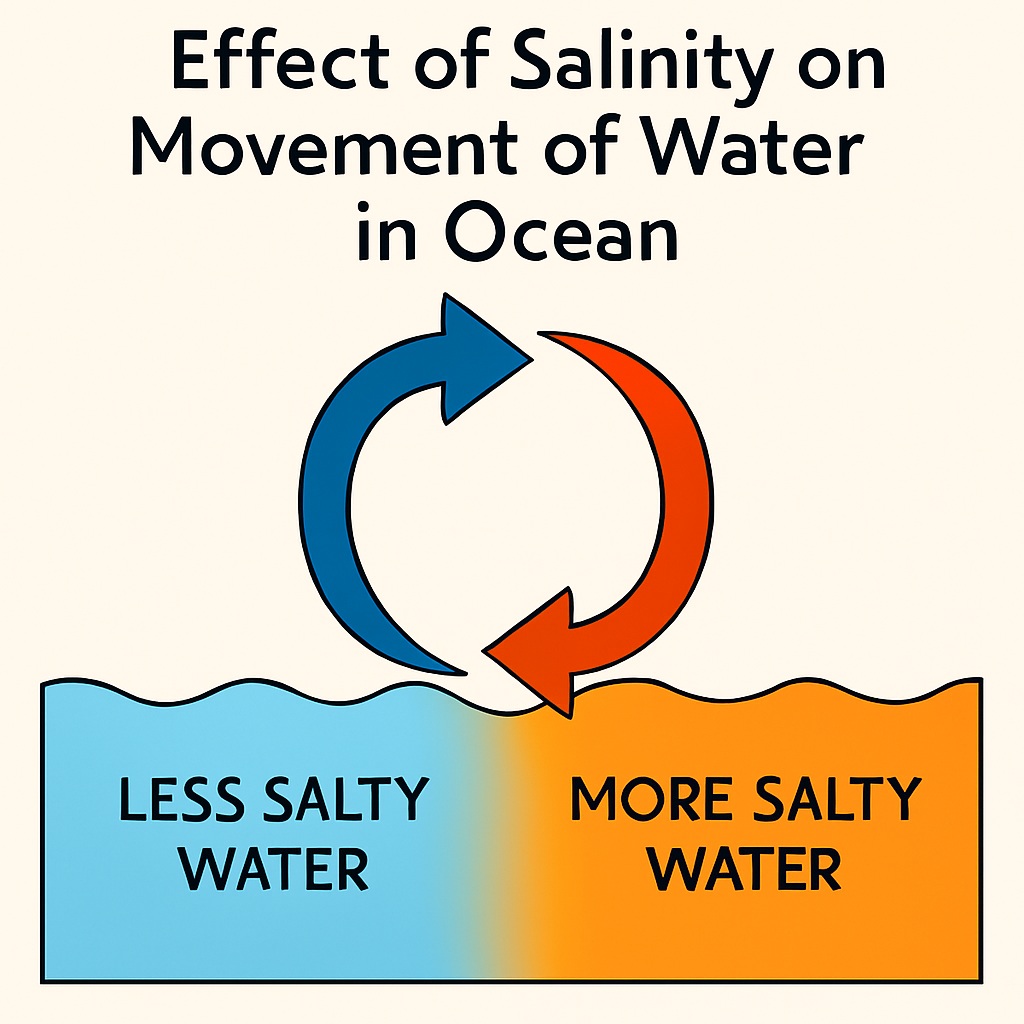
When salinity increases, the density of seawater also increases. Denser, saltier water tends to sink below less dense water, contributing to vertical movement in the ocean. This sinking of saline water is one of the key mechanisms behind deep ocean currents. In polar regions, for example, when seawater freezes, the salt is left behind in the surrounding water, making it saltier and denser. This denser water sinks and flows toward the equator, forming part of the deep, global conveyor belt of ocean circulation.
In contrast, areas with lower salinity (often due to high rainfall or river inflow) have less dense water that tends to remain near the surface. The difference in salinity between regions leads to horizontal movement of water as well, as denser water moves beneath lighter water to balance the density differences. This results in the slow but large-scale movement of ocean water masses, which redistributes heat, nutrients, and gases across the globe.
Overall, salinity contributes to the vertical stratification of the ocean and plays a vital role in driving thermohaline circulation, affecting climate and marine ecosystems on a global scale.
Conclusion
In conclusion, salinity is a critical characteristic of ocean water that influences the movement of water in the ocean and the distribution of marine organisms. It varies from place to place and depends on various factors such as temperature, precipitation, evaporation, and freshwater inputs.
Read: Geography Notes